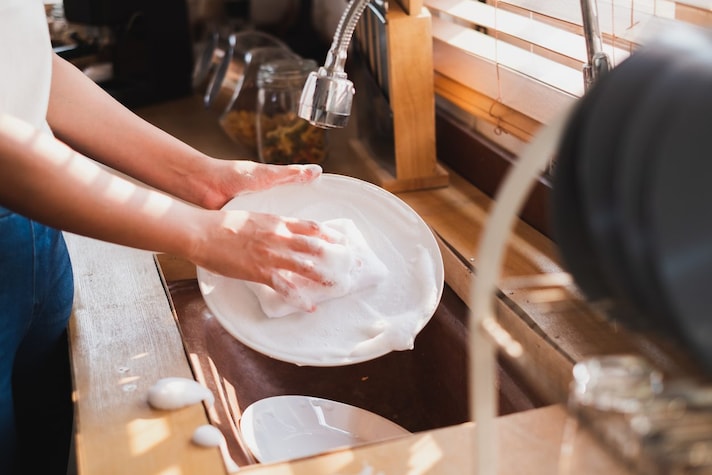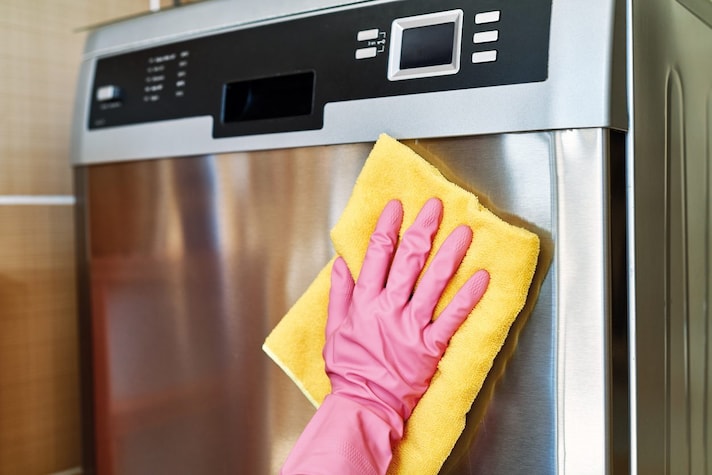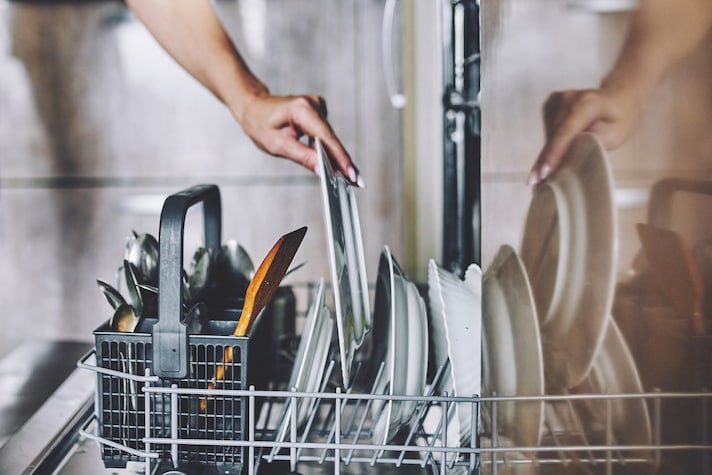
There are moments when conviviality fills the air: the aroma of a slowly simmering roast, the steaming pasta arriving at the table, glasses clinking in an impromptu toast. Then, like an inevitable ritual, that meaningful silence falls… until someone, with an innocent air, asks, "Who's doing the dishes?"
Whether you belong to the "sponge, hot water, and elbow grease" school of thought or the group that considers the dishwasher the best invention since sliced bread, know that how you wash dishes makes a difference. A seemingly trivial gesture, if done poorly, can compromise not only the cleanliness of your dishes but also the hygiene and, consequently, the flavor of your next dishes. Here's a guide to help you avoid the most common mistakes, both for hand-washing and dishwasher use.
The Most Common Mistakes When Washing Dishes by Hand
Washing dishes by hand requires attention to every step, as even small mistakes can compromise the hygiene of the dishes and increase time and effort.
1. Washing in a Dirty Sink
The sink, especially after a heavy dinner, becomes a little ecosystem of crumbs, grease, sauce splashes, and stagnant water. If you start washing dishes without cleaning it, you're essentially "reorganizing" the dirt, not eliminating it. Keep the sink clean: after you're done washing, wipe it down with a sink sponge and a food-grade sanitizer. It only takes a few seconds, but it makes a huge difference.
2. Using Too Much Detergent
The idea that "more foam = cleaner" is a persistent myth. In reality, using too much detergent means having to rinse longer, wasting water, and risking leaving residue that affects the taste of food. Use the amount indicated on the package: modern detergents are concentrated, and a small amount is enough. If you have a lot of dishes, start with the least soiled ones, so the water and sponge stay cleaner longer.

3. Not Removing Food Residues Before
Leaving crusty sauce or vegetable pieces on your dishes will make the wash longer and risk clogging the drain. Before you begin, wipe the dishes with paper towels or a spatula: there's no need to rinse them under the tap (this avoids waste), just remove the bulk.
4. Using a Dirty Sponge
Kitchen sponges are a favorite haunt of bacteria: warm, moist, and full of organic debris. Scrubbing with an unclean sponge is like spreading germs all over your dishes. Wring out the sponge well after each use and let it dry. Sanitize it daily in the microwave for 30 seconds (wetting it first) or in boiling water. Change it at least every two weeks, even if it still seems in good condition.
If You Wash Dishes in The Dishwasher
Using the dishwasher correctly is essential for obtaining clean and sanitized dishes, avoiding waste of water, energy, and detergent.
1. Using a Dirty Dishwasher
The dishwasher also needs cleaning: food residue, grease, and limescale build up and compromise the results of every wash. Furthermore, they can cause unpleasant odors and even damage internal components. Once a week, run an empty cycle with hot water and a specific detergent. This will remove residue and maintain the machine's efficiency.

2. Using Too Much Detergent
As with hand washing, adding more detergent than necessary won't improve the cleaning process. In fact, it can leave a cloudy film on glasses and plates and alter the flavor of subsequent foods. Follow the manufacturer's instructions, especially if you're using capsules or powder: they're designed to work best with the right amount.
3. Not Removing Food Residues Before Loading
Pieces of food can block filters or rotating arms, preventing water from reaching all the dishes. The result? Dishes still dirty and an inevitable second wash. Clean the dishes before loading them, without rinsing them: this saves water and reduces the risk of clogs. Then remember to run the dishwasher within a few hours.
4. Overloading the Dishwasher
Adding "that extra dish" to avoid a second cycle seems clever, but it actually reduces efficiency: the water doesn't circulate properly and the dishes aren't cleaned thoroughly. Load the dishes in an orderly fashion, leaving spaces between them. Two well-performing cycles are better than one poorly executed one.

5. Placing The Dishes Incorrectly
Every dishwasher is designed with a loading logic that maximizes the use of water jets. If you ignore this layout, you risk having wet but still dirty dishes. Here's how to best arrange your plates and dishes:
- Plates and pots: lower basket, tilted towards the centre.
- Glasses and cups: upper rack, upside down.
- Cutlery: Handles down, except knives, sharpened for safety.
;Resize,width=767;)
